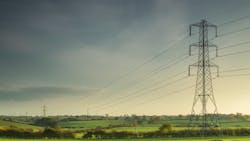Ofgem Approves £40 Billion-Plus Investment Program for Great Britain Energy System
Ofgem has finalized its price control for 2021 to 2026 (RIIO-2) by confirming a major investment program into Britain's energy infrastructure to improve services for customers, reduce the impact of the networks on the environment, and drive a fair price for consumers. Network companies run the pipes and wires that transport gas and electricity around Britain. They are funded through consumers' bills, via five-year price controls set by Ofgem.
Ofgem has unveiled a spending package of £30 billion (US$40.3 billion) upfront funding for the companies. This is in total ~20% more than it previously proposed in July. Following its challenge to them, companies submitted much better evidence on their spending plans enabling Ofgem to green-light more funding for crucial service, maintenance, upgrades and repairs. The package relates to gas and electricity transmission, gas distribution, and the electricity system operator for the five-year price control beginning April 2021.
Ofgem is also making unprecedented additional funding available for future green energy projects. That is projects that companies propose over the next five years, aimed at eliminating emissions from the energy system and helping hit net-zero targets across Great Britain — a major aim of Ofgem's price control.
Companies have indicated that £10 billion (US$13.4 billion) of such projects could be in the pipeline, such as reinforcement along the East Coast of England to anticipate 40 GW of offshore wind in the North Sea. However, there is no limit on the additional funding that could be provided, subject only to companies making good business cases. Ofgem has committed to working with companies and stakeholders to streamline its processes so that companies get funding without delay, when and where it's needed.
Customers will also see a £2.3 billion (US$3.1 billion) saving over the course of RIIO-2, equivalent to an average bill reduction of about £10 (US$13.4) before inflation. The regulator has secured this by demanding greater efficiency from companies and lowering returns to shareholders by 40% to bring them in line with current market levels. As investment in green energy transformation rises over the coming years, this will make sure costs are kept as low as possible for consumers.
Ofgem has made the following key changes since its July draft determinations, following 22,000 pages of further evidence:
- Allowed return on equity 4.30% (a 4.55% cost of equity, when taken together with expected 0.25% income from quality/cost incentives) — increased from 3.95% at draft determinations.
- £30 billion (US$40.3 billion) upfront funding to companies, increased from £25 billion (US$33.6 billion) at draft determinations.
- £132 million (US$177.5 million) funding for vulnerable consumers, doubling to £60 million (US$80.7 million) the vulnerability and carbon monoxide safety allowance from draft determinations.
In a separate price control, Ofgem is boosting funding for the electricity system operator to ensure that it stands ready, as soon as 2026, to operate a zero-carbon emissions electricity system.
Ofgem's Chief Executive Jonathan Brearley said: "Our £40 billion (US$53.8 billion) package massively boosts clean energy investment. This will ensure that our network companies can deliver on the climate change ambitions laid out by the prime minister, while maintaining world-leading levels of reliability.
“These costs must fall fairly for consumers. We are reducing the amount paid to shareholders so that they are closer to current market levels. This means that companies can attract the vital investment we need while making sure that consumers don't pay more than is necessary to achieve this.
"We are also ensuring that £132 million (US$177.5 million) is earmarked to support the most vulnerable in society, including carbon monoxide initiatives and funding new connections for those most struggling with their bills."
